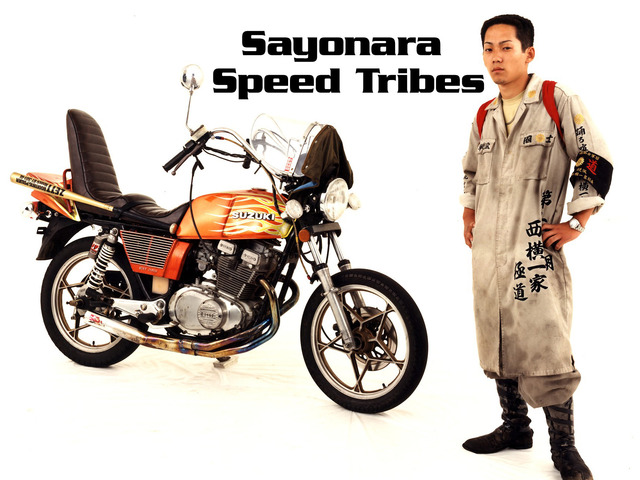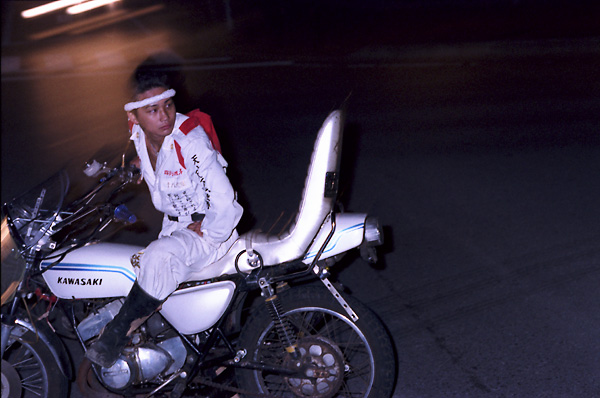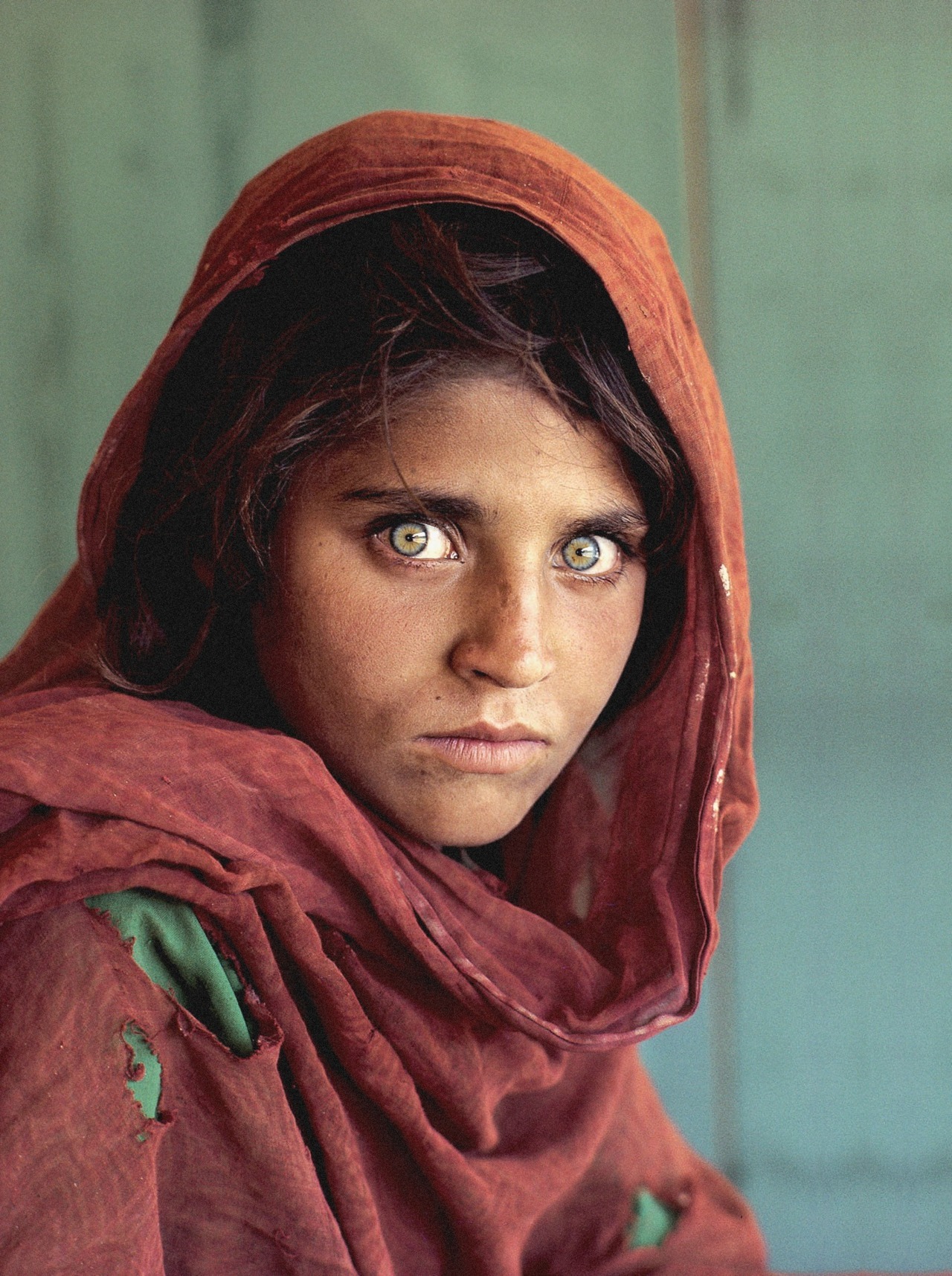Bosozoku ("violent running tribe")
Japan's leading maverick photographer reveals a unique vision of the notorious Japanese bike gangs, often linked to the underground activities of the Yazuka. A former member of the Bosozoku himself, Masayuki Yoshinga has revealed hidden secrets of Japan's biker gangs.
Bosozokus were first seen in the 1950s as the Japanese automobile industry expanded rapidly. The precursors to the bōsōzoku were known as kaminari zoku (雷族 "Thunder Tribe"), urban motorcyclist more akin to the British rockers.
Many, if not most, of bōsōzoku came from a lower socioeconomic class and may have used the motorcycle gang activities as a way to express disaffection and dissatisfaction with Japanese mainstream society. Many of the most hard-core bōsōzoku would become lower-ranking members of the Yakuza after turning 20 years of age.
In the 1980s and 90s, bōsōzoku would often embark on large rides, in which up to 100 bikers would cruise together slowly en masse down an expressway or major highway. The motorcyclists would run toll booths without stopping and would ignore police attempts to detain them. New Year's Eve was a popular occasion for the massed rides. The bikers would sometimes smash the cars and threaten or beat up any motorists or bystanders who got in the way or expressed disapproval with the bikers' behavior. The bikers would also often target foreigners for violence. Participation in the gangs peaked at 42,510 members in 1982.[wiki]







Full length doc on the Japanese Motorcycle gangs Circa 1976
Japan's leading maverick photographer reveals a unique vision of the notorious Japanese bike gangs, often linked to the underground activities of the Yazuka. A former member of the Bosozoku himself, Masayuki Yoshinga has revealed hidden secrets of Japan's biker gangs.
Bosozokus were first seen in the 1950s as the Japanese automobile industry expanded rapidly. The precursors to the bōsōzoku were known as kaminari zoku (雷族 "Thunder Tribe"), urban motorcyclist more akin to the British rockers.
Many, if not most, of bōsōzoku came from a lower socioeconomic class and may have used the motorcycle gang activities as a way to express disaffection and dissatisfaction with Japanese mainstream society. Many of the most hard-core bōsōzoku would become lower-ranking members of the Yakuza after turning 20 years of age.
In the 1980s and 90s, bōsōzoku would often embark on large rides, in which up to 100 bikers would cruise together slowly en masse down an expressway or major highway. The motorcyclists would run toll booths without stopping and would ignore police attempts to detain them. New Year's Eve was a popular occasion for the massed rides. The bikers would sometimes smash the cars and threaten or beat up any motorists or bystanders who got in the way or expressed disapproval with the bikers' behavior. The bikers would also often target foreigners for violence. Participation in the gangs peaked at 42,510 members in 1982.[wiki]



Check out the baseball bat



Bōsōzoku are known to modify their motorcycles in peculiar and often showy ways. A typical customized bōsōzoku bike usually consists of an average Japanese road bike that appears to combine elements of an American chopper style bike and a British café racer, for example: over-sized fairings like those found on café racers, raised handle bars like those on a chopper. Loud paint jobs on the fenders or the gas tanks with motifs such as flames or kamikaze style "rising sun" designs are also quite common. The bikes will often be adorned with stickers and/or flags depicting the gang's symbol or logo.

Full length doc on the Japanese Motorcycle gangs Circa 1976




